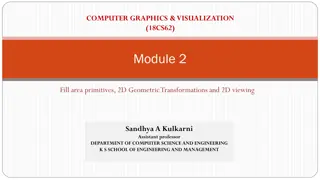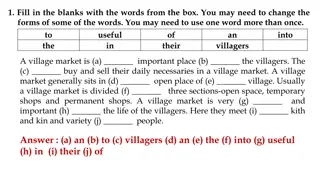Fill In The Blanks
Plant adaptations to different environments, including terrestrial, aquatic, and desert plants. Learn about unique characteristics like needle-shaped leaves, succulents, spines on cacti, and more. Discover floating plants, fixed plants, and underwater plants with specific features for their habitats.
Download Presentation

Please find below an Image/Link to download the presentation.
The content on the website is provided AS IS for your information and personal use only. It may not be sold, licensed, or shared on other websites without obtaining consent from the author.If you encounter any issues during the download, it is possible that the publisher has removed the file from their server.
You are allowed to download the files provided on this website for personal or commercial use, subject to the condition that they are used lawfully. All files are the property of their respective owners.
The content on the website is provided AS IS for your information and personal use only. It may not be sold, licensed, or shared on other websites without obtaining consent from the author.
E N D
Presentation Transcript
Fill In The Blanks 1. Adaptation is the process of adjusting to different environmental conditions. 2. Plants that grow on land are known as terrestrial plants. 3. Plants that grow under water or on the surface of the water are called aquatic plants. 4. The leaves of pine trees are needle shaped and have a waxy coating. 5. Some plants store water in their stems or leaves. Such fleshy plants are called succulents.
6. A cactus is a desert plant which has spines or scales, which are modified leaves. 7. Desert plants have long taproots systems that go deep into the ground to absorb water. 8. The most common examples of desert plants are cacti, babool, keekar and date palm.
Define The Following 1. Floating plants: Plants that float on water are called floating plants. These plants have; a. lightweight bodies b. spongy stems. Eg Duckweed, water lettuce. 2. Fixed plants: The roots of some plants are fixed to the bottom of a water body. These plants are called fixed plants. They have; a. Hollow and lightweight stems. b. A waxy coating on the surface of their leaves. c. Stomata only on the upper surface of their leaves. Eg Water Lily, Lotus.
3. Underwater Plants: The plants that always grow and remain underwater are called underwater plants. These plants; a. Have long, thin, narrow leaves like ribbons. b. Don t have stomata. Eg Hydrilla, tape grass























